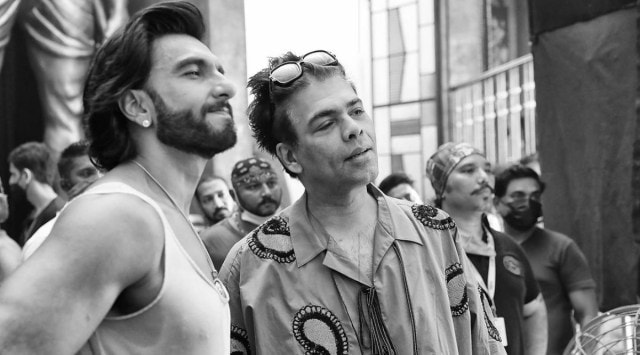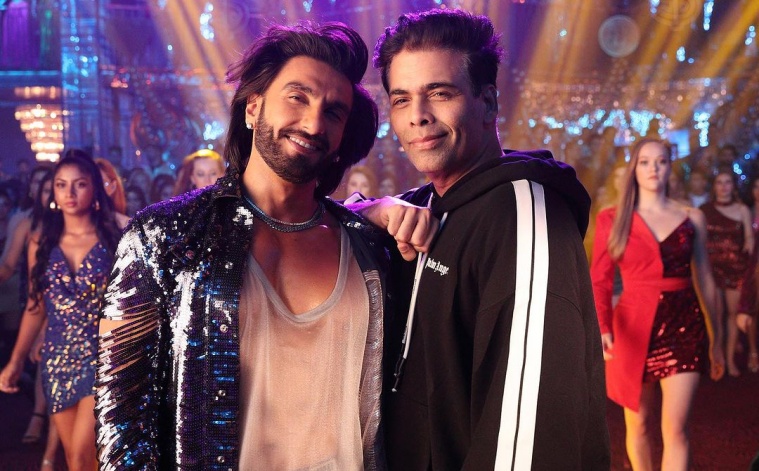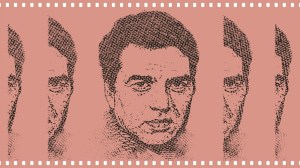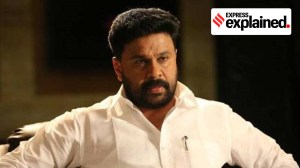Click here to follow Screen Digital on YouTube and stay updated with the latest from the world of cinema.
‘Swad wahi, soch nayi’: How Rocky Aur Rani Kii Prem Kahaani shows Karan Johar’s evolution as a filmmaker
Karan Johar's Rocky Aur Rani Kii Prem Kahaani feels relatable and relevant, so that you not only leave the theatre with a smile, but also pondering over the issues it raises. And when a mainstream filmmaker like Johar addresses topical issues, they get legs and conversations travel far.
 Karan Johar has grown in his craft and that is quite visible in Rocky Aur Rani Kii Prem Kahaani. (Photo: Karan Johar/Instagram)
Karan Johar has grown in his craft and that is quite visible in Rocky Aur Rani Kii Prem Kahaani. (Photo: Karan Johar/Instagram) Swad wahi, soch nayi!
Rocky Aur Rani Kii Prem Kahaani is a reflection of a lot of things but one that stands out is Karan Johar’s love for cinema; it’s infectious and as his audience, you can’t help but end up with gooey eyes yourself.
Karan Johar has a larger-than-life public persona and a maximalist vibe, both of which the filmmaker has worn like a badge over the years. But, when it comes to his films, he has not always been happy when they’re boxed into ‘Brand Johar’. Before Rocky Aur Rani Kii Prem Kahaani, Karan directed six films, and critics often labelled them as glamorous, frivolous and over-the-top romances or melodramatic ‘NRI’ family dramas. “I have made films that are more than just popcorn films,” the filmmaker had once told Forbes.
If there is something that proves Karan’s point, albeit eight years later, is his latest directorial drama, Rocky Aur Rani Kii Prem Kahaani. He has made a film that feels relatable, has a strong and timely message and has you leaving the theatre not just with a smile, but pondering over what you saw. Set it alongside Kuch Kuch Hota Hai (1998), his first film, and it be hard to say that the two films were made by the same maker.
This showcases evolution of Karan Johar as a storyteller and as a director, and maybe as a person who has embraced — and is ready to celebrate — who he is and what he believes in.
Yes, he ticks all the boxes in our bingo card. There is a big palatial house for one character, middle-class upbringing for another; there is comic relief amid intense drama; melodious romantic songs shot with larger-than-life backdrop; lead actors are fashionistas, and the soundtrack makes for a perfect wedding playlist.
 Rocky (Ranveer Singh) is the scion of the uber-rich Randhawas and is the future owner of the prosperous ‘mithaai’ business.
Rocky (Ranveer Singh) is the scion of the uber-rich Randhawas and is the future owner of the prosperous ‘mithaai’ business.
But it would be unfair to associate him just with ‘popcorn, bubblegum, frivolity, NRIs and rich people.’ It would be stereotyping him, something that Karan has tried to address in Rocky Aur Rani Kii Prem Kahaani. He has broken the stereotypes of his films and dealt with issues that are relatable and relevant.
Take for instance Rocky Randhawa’s sister Gayatri aka Golu (Anjali Anand) who is subjected to incessant fat-shaming. She is reduced to being a ‘bojh’ (burden) on the family and is often paraded in front of prospective grooms and their families in an attempt to marry her off.
But there comes a point in the film when she gets hold of her life – helped along by Rani – and feels better about herself. Johar doesn’t turn her into a picture-perfect diva, instead she is made aware of her capabilities, which are not directly proportional to her body weight. Instead of using her body weight as a vehicle for humour, he has used it for a larger purpose.
View this post on Instagram
If you look back, the arc comes from the same filmmaker who gave confidence to an overweight Rohan aka ‘Laddu’ aka ‘Fatty’ (played by Hrithik Roshan) in Kabhi Khushi Kabhie Gham only after his paunch is replaced with beefed-up muscles. The transformation in storytelling is not limited to character arcs but also to central aspects of a Karan Johar film – the love story.
Before Rocky Aur Rani, the couples in Karan’s films have seemingly lived happily forever, without apparently putting much work into their relationship. Be it Rahul (Shah Rukh Khan) and Tina (Rani Mukerji), and Rahul and Anjali (Kajol) of Kuch Kuch Hota Hai or Rahul and Anjali of K3G, the filmmaker never shows how their initial attraction transforms into love. How did once ‘unlucky in love’ Rahul of Kuch Kuch Hota Hai, falls in love with Anjali after seeing her in a saree, that too after claiming that love happens only once?
Here, the struggles that go into the making of a ‘happily-ever-after’ get representation. We are told the understated fact: ‘Rishton mein backseat driving toh family hi karti hai’ (in relationships, families dictate how things progress). Rocky and Rani grow from just being physically attracted to being deeply, but not madly, in love.
Even before professing her love, Rani considers that she is only having a fling with Rocky, because how can an educated, erudite woman like her fall in love with flashy and flamboyant Rocky? She is also well aware of the reality of a potential marriage with Rocky. She knows what it means when people say, ‘shaadi sirf do dilon ka nahi, do parivaaron ka sangam hai’ (marriage is not only about two people who are in love, but also about their families), and thus suggests living with each other’s family for three months before actually considering tying the knot.
Karan has probably also realised that by acquiring money one does not gain class, and lack of it does not make one ‘tacky’; case in point, Anjali from Chandni Chowk. Rocky is the scion of the uber-rich Randhawas and is the future owner of the prosperous ‘mithaai’ business. Yet, he “toh not knows English” and he believes “West Bengal is in the west, obvio!”
 Tota Roy Choudhary’s character of a Kathak guru is a pleasant exit from K3G’s Yash Raichand.
Tota Roy Choudhary’s character of a Kathak guru is a pleasant exit from K3G’s Yash Raichand.
The baraat at the end, which is probably more pink than the entire Greta Gerwig’s Barbie, speaks volumes about Karan’s understanding of gender stereotypes. Tota Roy Choudhary’s character of a Kathak guru is a pleasant exit from K3G’s Yash Raichand (Amitabh Bachchan), an epitome of arrogance, and an egocentric control freak. The character appears in the movie of a director who sold the idea of hypermasculinity in his film Student of the Year. Rohan (Varun Dhawan) never hugs his best friend Abhimanyu (Sidharth Malhotra) as that would make him look “gay”.
Also, the men of Rocky Aur Rani Kii Prem Kahaani do not suffer from a saviour complex. Rani is no damsel in distress who would need Rocky to stand up for her when she and her family are insulted.
That Karan has evolved as a person becomes evident in Rocky’s monologue on the cancel culture. Through the scene, he wants people to be compassionate towards each other; he wants them to respect and embrace each other’s differences of opinion. In the film, Rocky rants about how the belief system of drinking tea leads one to get dark skin is instilled early on and is not an intentional quip at people with dark tones. Further, how people are quick to ‘cancel’ others at the drop of a hat: for calling Chinese people Chinese; for calling his sister ‘golu‘ and being labelled ‘misogynist’ if you don’t want to go bra shopping. It almost appears that this is Karan speaking through his movie.
He is the same person who once wrote in his autobiography, “I’m supposed to be this frivolous filmmaker who makes films about rich people and their issues. I get so angry with certain intellectual voices. I want to go and tell them, ‘Just shut up! What have you written? What have you done? I work very hard.”
Karan Johar has beautifully evolved from being a filmmaker who taught us that it “is all about loving your parents”, (K3G) to making a family film, with which he tells us it is still about loving your parents, but not unconditionally. Let the family also earn some of your love by leaving behind cultural prejudices.
 A still from Rocky Aur Rani Kii Prem Kahaani featuring Alia Bhatt and Jaya Bachchan.
A still from Rocky Aur Rani Kii Prem Kahaani featuring Alia Bhatt and Jaya Bachchan.
Karan Johar acknowledges the problematic nature of his previous characters – primarily Rahul of Kuch Kuch Hota Hai. At the IIMUN event, he said, “The first film that I made, Kuch Kuch Hota Hai, I firmly believe that the gender politics of that film was all wrong. It is propagating incorrect gender politics, there is a lot of ‘surfaceness’ in that film. Of course, there is nostalgia so you love it, but you don’t scratch the surface of the film and see that what Rahul is doing is actually not what I would want all the Rahuls in the audience, or all the boys in general, to do.”
His new male lead character, Rocky, is on a different spectrum from Rahul in more ways than one. That, on its own, highlights growth for Karan Johar and, possibly, by extension, that of Indian cinema.
- 01
- 02
- 03
- 04
- 05


































